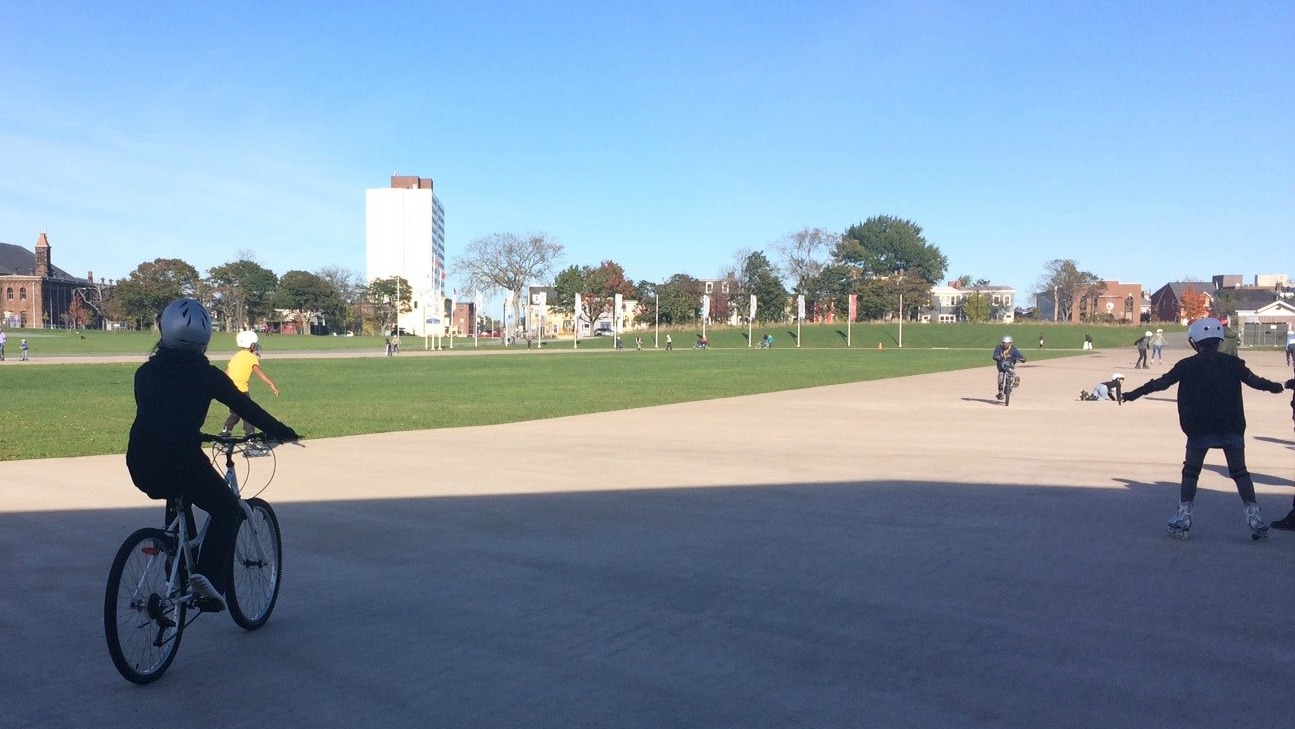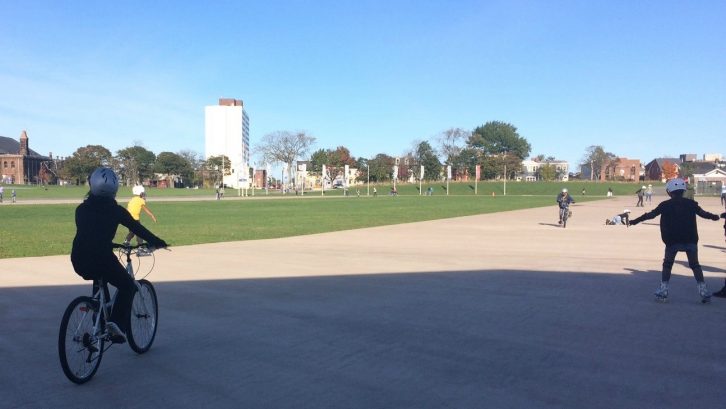Accessibility
Emera Oval makes speed skating more accessible
Free lessons and skates help Haligonians enjoy the sport

caption
The Emera Oval, on the Halifax Common, hosts cyclists, runners and inline skaters in the summer, and all types of ice skaters in the winter
caption
The Emera Oval, on the Halifax Common, hosts cyclists, runners and inline skaters in the summer, and all types of ice skaters in the winterIt’s a chilly fall morning on the Halifax Common. The park is quiet, except for the pack of speed skaters training on the Emera Oval.
There is no ice on the rink yet, but Todd Landon’s athletes are working hard, beating the public to the punch with 7 a.m. practices.
Speed Skating Canada’s high performance coach is putting his favourite oval to use, coaching the elite team year round with inline skating in the off season, and on the ice in the winter. Related stories
The oval has been a significant factor in bringing speed skating to the public, thanks to its central location on the Halifax Common. It is also the home of Speed Skate Nova Scotia’s free program, Learn to Speed Skate, which runs on Saturdays once the rink has ice on it.
The organization’s president, Brent Thompson, says a surprising number – about 75 per cent – of participants in the program have been adults, largely first or second-year university students with a solid sports background.
The oval provides speed skates for the amateur skaters, but most of the program members don’t know that they are available to practice in outside of the scheduled lessons.
“I’d like to see the skates being used all week long, not just on one day,” says Thompson, reiterating that they are free to rent.
Landon cites overall accessibility to equipment as a major hurdle for those wanting to participate in the sport at any level. Speed skates can’t be found in local sporting goods stores, unlike hockey sticks and figure skates, so it takes more legwork to get on the ice.
One solution he has come up with is to buy back equipment from kids as they outgrow it – both physically and in terms of skill level. Many clubs have skates to rent too, lessening the financial commitment of trying speed skating for a season or two.
The Halifax Regional Speed Skating Club also spends time on the oval in the winter, and trains at St. Margaret’s Arena in Tantallon when the outdoor surface is unavailable. Vice-president, Kevin Goswell, says 28 youths train with the club, and over half of the members compete at a regional level or higher.
“There are some who want to be competitive coming out of [hockey and figure skating] but the majority are just starting to skate. They’re skating, had some previous experience with skating, and then tried at the beginner level and worked their way up,” says Goswell.
Children as young as eight race, and the competitive scene provides an opportunity to make and keep up with friends from other provinces.
“The kids are all very supportive of each other. They’re competing against themselves, they’re competing against the best kids in their time class, so it creates an environment at the meets that’s a good, positive, competitive experience. That’s what’s really struck me as a new-to-the-sport parent,” says the club’s treasurer, Merrell Moorhead.
There’s a bite in the air in Halifax as it gets closer to skating season. The oval is ice-free, but not for long. And for anyone looking to try out some long blades, it’s the place to be in December.
